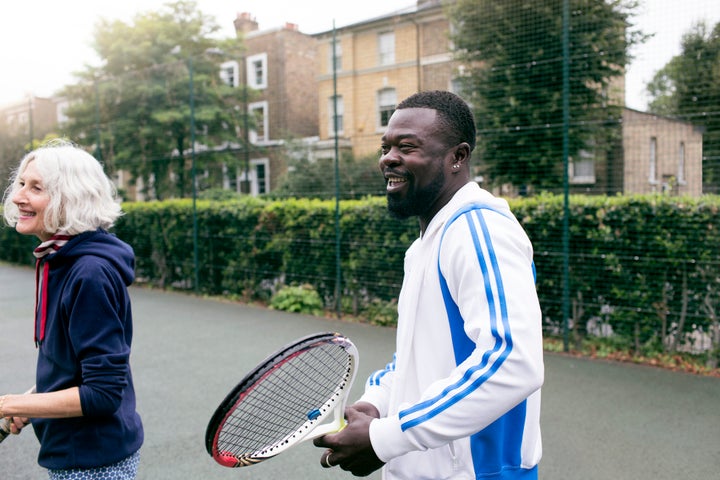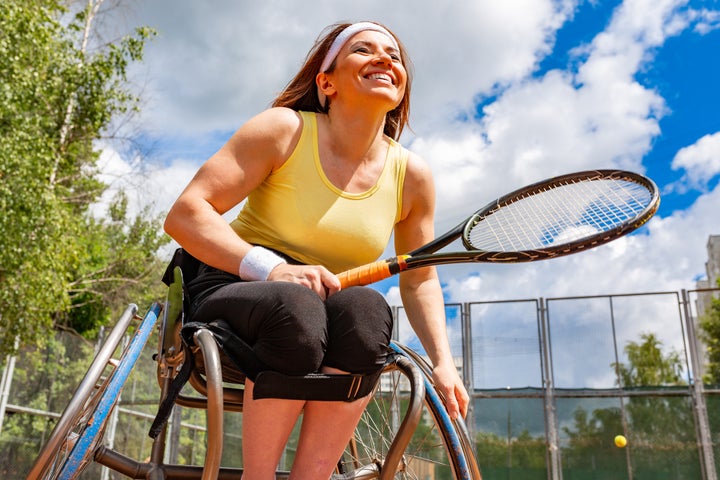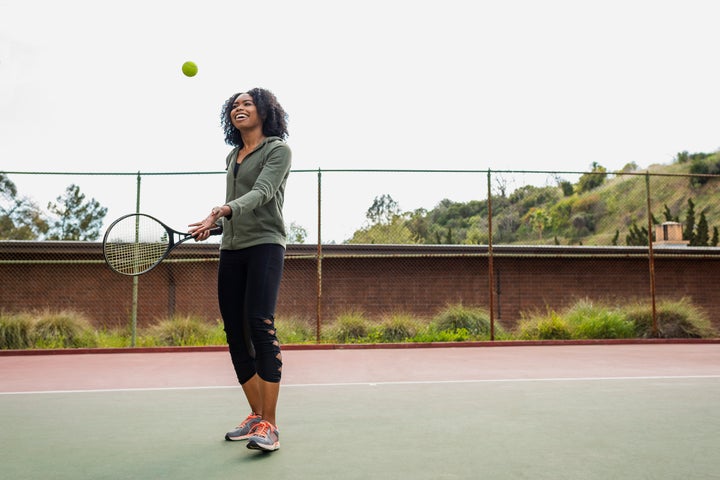Wimbledon is back for 2021, set to welcome an estimated 15,000 visitors to Centre Court by finals weekend – although without its famous queue this year.
But the courts of the All England Club won’t be the only ones that are busy. The pandemic – and earlier gym closures – led to a surge in people picking up a racket last year to stay fit and socialise outside with friends. According to the Lawn Tennis Association (LTA), there was an 8% increase in participation year-on-year from 2019 to 2020, the biggest the sport has seen in a while.
And with the Championships on our screens, it’s likely to get a further boost.
The good news is that you don’t need to spend a fortune or have Serena-level skills to try your hand at this sport. Tennis is a full body workout that boosts mental health and improves agility, at very little cost, says Matt Smith, who’s been named the LTA’s British Coach of the Year. It’s also socially-distanced.
We asked for Smith’s help in creating a quick guide for the newbie player.

Get the gear
The equipment you need to play tennis can be easy to come by, nor does it have to be expensive. “All you need is a pair of comfy non-marking sports trainers and a cheap racket to start (perhaps an old school racket gathering dust in your cupboard),” says Smith.
“Try to use a racket with the correct grip size – when holding the grip you should be able to fit a finger in the gap between your fingertips and base of thumb – you could build this up with an extra grip. If the racket frame is made from one piece of material, ideally graphite, it’s more stable. Some fresh strings can help refresh an old racket.”
Any tennis ball will do, but if you’re a beginner, Smith recommends trying low compression balls. “These are transition balls created to help you learn and pick the sport up,” he explains. “They come in red, orange or green (lowest to highest compression) and are easier to control and get playing. Even some of the top pros will use these when working on something new or coming back from injury.”
Your normal work-out gear is all you need to play on court in your local park or club, so don’t feel like you need to go out and buy anything special – unless you’re looking for an excuse to pick-up something new.

Find a court
You don’t need to worry about fancy memberships from the off. The best way to begin is to get yourself down to your local park courts with friends and family and practise, says Smith.
“Don’t worry too much about grips and technique at first. Get playing,” he says.
“You can easily and conveniently book a court through Rally, find a group class or someone to play against.”
Your local court may also have an informal league, where players of all abilities help to improve each other’s skills. It’s a great way to meet new people – don’t panic, plenty of people wander down alone to see what all the fuss is about.

Get acquainted with the basic moves
While you can dive straight in with tennis, don’t expect to be a pro over night. Smith recommends trying these exercises to improve your skills:
Practise hitting the ball
“Start in a small space. You don’t even need to start with a net in the way,” he says. “Hit the ball up and take it in turns with a partner to get your first small rally (success!). Progress into the service boxes over a net and then mid-court, finally to the baseline – but there’s no rush.”
Learn some tactics
The number one tactic is ‘over and in,’ says Smith. “Have a low to high path of the racquet and push the ball over the net into the box. You don’t have to hit it hard, that’s a common misconception, most points are won by the other person missing or making a mistake. Plus it’s more fun when you both get it in and keep it going.”
Remember your footwork
Tennis is mainly about footwork and positioning, says Smith. You could have the best forehand and backhand in the world, but that’s no good if you’re not in the right place to hit the ball.
“Start with an athletic ready position, do your best to read the ball (the spin, speed, height, depth and direction), get into a balanced position before the ball bounces, hit and then recover back to a central position to cover the court,” he advises.
Serve like you’re throwing
People often struggle with the serve, but it can help if you try to think of the movement like a throw, says Smith.
“Place the ball up into the hitting zone above your head with your non-dominant hand and throw the racquet towards the ball (not literally, I’ve seen this happen before). Remember, the ball goes where the strings are pointing. Start by pushing it ‘over and in’ for consistency, remember, it’s not all initially about power.”